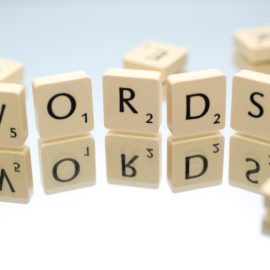

This article is an excerpt from the Shortform book guide to "Attached" by Amir Levine and Rachel Heller. Shortform has the world's best summaries and analyses of books you should be reading.
Like this article? Sign up for a free trial here .
Ever wondered, “what is my partner’s attachment style?” How can knowing your partner’s romantic attachment style improve your relationship?
Understanding your partner’s attachment style can save you a lot of emotional struggle. Whether you are in a new relationship or a long-term marriage, understanding how your partner feels and thinks can help you solve problems (or help you decide whether they’re worth solving).
Continue on to take the “What is my partner’s attachment style?” quiz.
Decoding Your Partner’s Attachment Style
Ever wondered, “what is my partner’s attachment style?” Whether you’re starting out in a new relationship or struggling to find harmony in a decades-long marriage, understanding your partner’s beliefs and attitudes about intimacy can save you a lot of emotional struggle.
Since evolution has assigned our romantic partners the job of being our secure base, it follows that if you want to thrive, you should find the most dependable and secure partner. Maybe you’re on your third date and you’re wondering whether this new relationship holds promise for a sustainable future. Once you get an accurate picture of this new person’s capacity for intimacy, you’ll stop wondering, “Does he or she really like me?” and start asking a more important question: “Is this person able to give me the emotional support I need?” Because if the answer to the second question is no, the answer to the first is irrelevant.
Or perhaps you and your long-term partner have never succeeded in finding a peaceful equilibrium, but you can’t figure out why. By determining your partner’s attachment style—and knowing your own—you’ll finally understand what lies at the root of your conflicts.
Determining another person’s attachment style is slightly more difficult than determining your own. After all, you can never “get inside” another person’s head. But while you may not know everything your partner feels and thinks, you do have intimate experience with their everyday actions and words—and those are telling.
How to Recognize a Secure Partner
A person with a secure attachment style has a compelling desire to achieve closeness with a romantic partner, but they’re also not overly concerned about rejection. They don’t need to constantly negotiate how much intimacy or how much independence their relationship gives them—they’re generally content with whatever their partner wants.
Secure attachers are consistent and reliable—they show up on time, they phone when they say they’re going to phone, and they keep promises. They discuss plans with you and don’t make decisions until they get your input. They open up their lives to you and typically introduce you to their family and friends relatively early in the relationship.
They’re also excellent communicators and know how to ask for what they want. They tell you if something is bothering them. They aren’t afraid to discuss emotional issues or “touchy” relationship issues. They express their feelings for you openly and often—for example, it’s easy for them to say “I love you.”
If you’re in a relationship with a secure attacher, you’re in an emotionally safe place. Your partner engulfs you in an emotionally protective shield. They’re very concerned about your well-being and are almost always willing to work out disagreements in a fair, compromising way. They enjoy being your secure base and making it easier for you to face the perils of the outside world.
How to Recognize an Anxious Partner
A person with an anxious attachment style has a compelling desire to achieve closeness with a romantic partner and is highly tuned in to any perceived threat to that closeness. They’re preoccupied with making the relationship work, so at times they may seem overly focused on you. For example, an anxious attacher may ask a lot of questions about your past relationships to see how they measure up.
The anxious attacher’s sensitivity to the relationship can be a huge asset, or it can lead to unnecessary drama. If you have to work late or spend a weekend without them, they may feel rejected. They’ll be very concerned about what you’re doing when you’re not together.
Unfortunately, when an anxious attacher feels threatened, they tend to have a hard time expressing what’s bothering them. They will sometimes act out or get angry because you can’t guess what they need.
On the positive side, anxious attachers happily show their devotion; for example, they tend to be very affectionate—fond of hand-holding, hugging, and kissing. If you can quell an anxious attacher’s fears and offer them the reassurance they need, you’ll have a highly loving and devoted partner.
How to Recognize an Avoidant Partner
A person with an avoidant attachment style lacks a compelling desire to achieve closeness with a romantic partner. Like all humans, their brains are wired to seek an intimate connection, but when the partnership gets too close, they feel suffocated.
If you’re just starting a relationship with an avoidant attacher, you may find that they give out confusing signals. For example, they may call you several times one week, then not at all the next week. They may “come on strong” at first, but start creating emotional distance as your relationship develops—suddenly, they may say that their work is all-consuming, or they need to take a break from togetherness.
Avoidant attachers are often reluctant to introduce you to their family or friends. They might make comments about taking a trip or moving to another city without mentioning whether you’re part of that equation. They might even make disparaging statements about other couples’ committed relationships, like “He’s only in the relationship to get her money” or “She’s trying to trick him into marriage.” As your relationship progresses, they might suggest that the two of you are better off living in separate houses or not getting married.
If you’re in a long-term relationship with an avoidant attacher, you will find that they use everyday conversations—about what to watch on television, how to care for pets or kids, or when and where to go on vacation—as ways to negotiate their independence. Because you’ve been in this relationship for a while, you’ve probably already learned how to accommodate their needs for distance and space. Most likely, you give in to their wishes. If you don’t, the avoidant partner will withdraw, or the relationship will end.
Interestingly, two people with avoidant styles rarely end up in a partnership because neither one is ever willing to compromise. They simply can’t make it work.
Double-Check: Apply These Backup Tests
Before labeling your love interest as an anxious, secure, or avoidant attacher, double-check your overall impression of their attachment style against these four “golden rules”:
- Ask yourself whether your partner is acting in ways that show they want intimacy and closeness with you. If you’re doing the seeking, not them, the answer is no, and they likely have an avoidant style.
- Ask yourself whether your partner seems to get hurt easily by things that you say or seems overly preoccupied with whether you like or love him or her enough. If the answer is yes, then he or she likely has an anxious attachment style.
- Don’t be overly hasty or simplistic in evaluating your partner. One action or behavior doesn’t determine someone’s attachment style—look for patterns or combinations of actions, behaviors, and attitudes. (For example, if you’ve been dating someone for two months but she hasn’t introduced you to her teenage kids, it doesn’t necessarily mean she’s avoidant. Examine a wide range of behaviors and communications and ask yourself what overall message she’s sending.)
- Pay attention to communication styles. How someone responds when you express your feelings or needs is a great litmus test to see what their attachment style is (and whether they can meet your emotional needs). If your partner doesn’t respond receptively when you say something like “Can we talk about our holiday plans sometime this week?” then you may be talking to an avoidant. Similarly, if you hear only silence after you say, “I really enjoy our time together, and I hope we can share more times like this,” that silence is a pretty clear signal.
Beware of wearing rose-colored glasses. When you’re newly involved with someone, it’s easy to see what you want to see and ignore the rest. To be a good scientist, you need to pay attention to all of the messages they send, not just those you want to hear. (And since new romantic partners sometimes send mixed messages, you need to weigh all those messages equally.)

———End of Preview———
Like what you just read? Read the rest of the world's best book summary and analysis of Amir Levine and Rachel Heller's "Attached" at Shortform .
Here's what you'll find in our full Attached summary :
- Why your partner behaves the way they do
- How your attachment style affects your relationship
- How to distance yourself from unhealthy relationships






